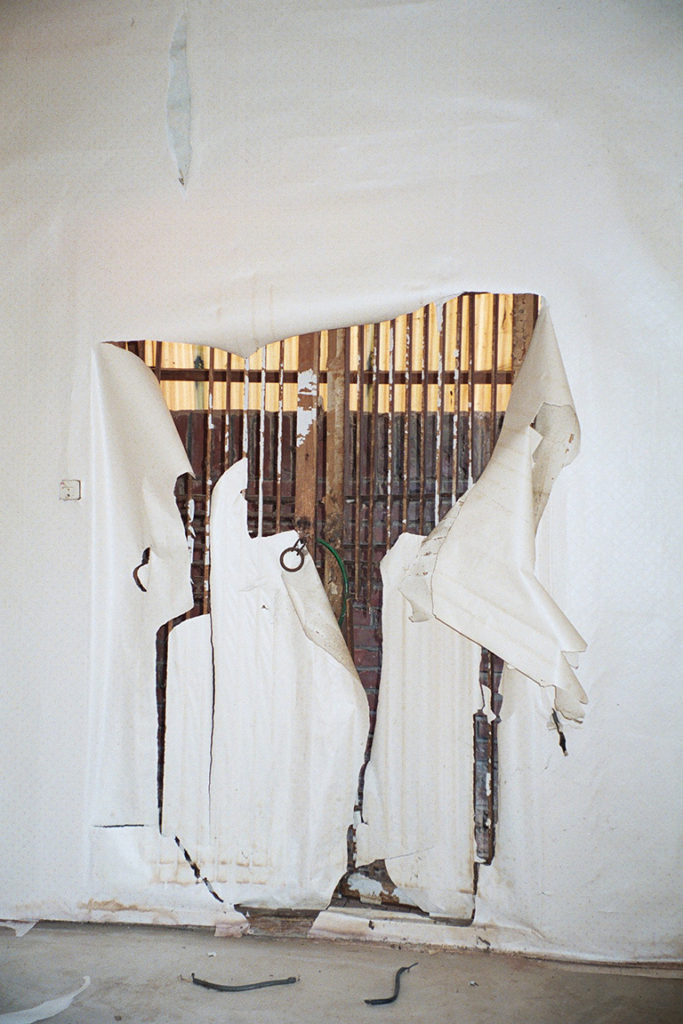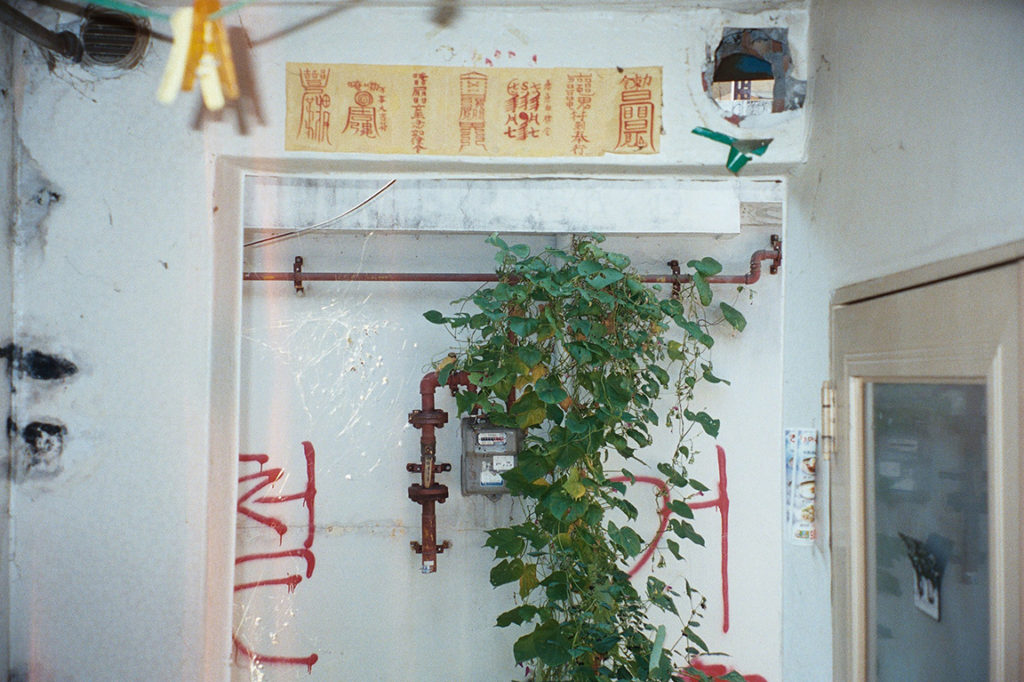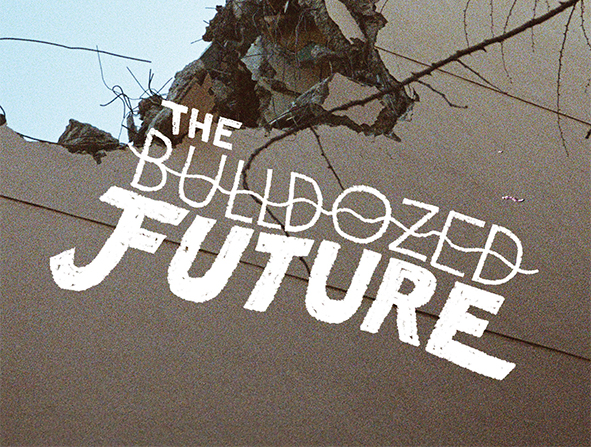The Bulldozed Future
An Interview with the Zine’s Editor, Ryan Berkebile.
Introduction and Interview by William Urbanski.
A few thousand years ago a volcano erupted, covering an entire city in lava and ash. Over time, a new city was built on top of the old one, which was, in time, all but forgotten. Serendipitously, the old city was discovered and excavated, revealing troves of commonplace but excellently preserved items that gave indispensable insight into the daily lives of the people who once lived there. That forgotten city is now one of the most significant cultural and archeological sites in the world and is called Pompeii.
While Gwangju and the rest of the Korean Peninsula certainly are not at an immediate risk of being buried under volcanic ash, there is another powerful force covering a significant part of its foundations: rapid development, especially of buildings, the construction of which requires entire neighborhoods to be erased from the landscape.
While the perceived need for development is a whole issue in and of itself, there are certain people who focus on the edifices that are lost when this happens. The old-fashioned or obsolete buildings are all too often wiped out with little regard for what is lost.
As anyone who has studied anthropology knows, far more important than spoken language, stories, or traditions, it is the material culture of a society that gives crucial insights into the society – insights that can and may be lost forever in the bulldozed future.
As managing editor of the Gwangju News, I got in contact with Ryan Berkebile, urban explorer and the editor of the zine The Bulldozed Future, for this interview.
Gwangju News (GN): I gotta ask: What’s this whole fascination about going into abandoned buildings? Isn’t it a bit dangerous?
Ryan Berkebile: An abandoned building is a visually stunning scene. It evokes a vast array of emotions. Some people are embarrassed by it; others are depressed by the emptiness and decay. I am fascinated by such buildings and what potentially lies inside them. I think of my hobby as a form of anthropology mixed with modern urban archeology. Part of the adventure is finding artifacts that will help me learn more about the former occupants. I spend my free time exploring and taking pictures of abandoned buildings in condemned neighborhoods prepped for demolition. I record what I see with a camera, archiving the images to provide evidence of Korea’s dying communities.

There is always some risk going into a house, either one that has been neglected for a long time or one set for demolition. A neglected house will be full of dust and mold, which is terrible to breathe in, so even before the pandemic, I would recommend wearing a mask inside to everyone to protect their lungs. When you explore, there is also the potential of being exposed to asbestos; sometimes, you will come across yellow disposal bags filled with roofing made from the stuff. I try not to stay too long in houses with asbestos roofing. Again, I would recommend wearing a mask if you expose yourself to it. Just because a building looks sturdy does not mean it is. The place you go into may be barely holding in place; keep that in mind when you survey a house. Other dangers involve walking over broken glass, climbing fences and walls, or maneuvering over piles of debris, which might have sharp nails sticking out. If you have an aversion to these things, it might be best to admire this hobby through social media.
GN: What are your personal rules (or “code” if you will) when entering a building to take photos?
Berkebile: In general, treat the area you photograph as a campsite or like an environmentally and socially conscious tourist would. Ethical urban exploration is on par with eco-tourism. Leave the site the way you find it; take photos and leave only footprints. Do not break things just because the place might appear like a warzone. Do not vandalize the area because former residents might come back to retrieve their possessions. Also, you will look like a jerk to the remaining residents in the area. The evicted are already dealing with harassment by hired goons, lowball compensation figures from the developers, and the prospect of losing their homes. Try to be as discreet as possible when visiting a place; do not get caught going into a site. The goal as an urban explorer is to be neither seen nor heard.
GN: Have you ever had a confrontation?
Berkebile: As I said before, it is ideal to be as invisible as possible when out seeing an abandonment. If you use common sense and caution, most times you will be able to explore without any problem. Perfect timing and a bit of luck lead to a successful and drama-free day out in the field. Sometimes, you cannot control the situation, and a person will see you coming out of a building. I find that honesty works the best. I state my intention of being there and hope the person will understand. If not, I will politely offer an apology and be on my way. I find the most contentious people are the demolition workers. Yet, they are not that angry; they are mostly confused why someone would want to go into an abandoned house. I feel that is the general feeling people emote when I tell them about my intentions.

GN: Since you’re heavily into photography, could you tell our readers what kind of camera gear you use and why?
Berkebile: Because I am usually climbing up and over things, I try to keep things to a minimum. I rarely bring a tripod. I use point-and-shoot 35mm and medium format film cameras that are lightweight and can fit into the small bag I take along on explorations. While I would like to shoot scenes with my three-kilogram Mamiya that shoots 6×7, it would be a logistical nightmare trying to figure how to maneuver around smoothly and safely.
GN: Why should people care about this stuff? A bunch of old buildings get plowed into oblivion. So what?
Berkebile: It is not for everyone. I understand that when confronted with these intense scenes, it can hit people hard. It might bring up melancholic feelings of the past, on a personal and historical level. Perhaps that is why demolition crews put up brown tarps to shield the public’s eyes from the demolition process of a once lively, vital community.

On one level, paying attention to redevelopment zones offers a glimpse into the politics of urban renewal and redevelopment played out in modern South Korea. You become aware of why citizens fight tooth and nail until the end to bring awareness to their situation. As I mentioned earlier, redevelopment firms offer residents meager amounts of compensation to relocate. These same companies hire strongmen to intimidate residents into leaving without a fuss.
On another level, exploring redevelopment zones provides a chance to dive into Korea’s history and culture, albeit in an unorthodox way. I have learned much about shamanism through my encounters with abandoned mudang (shaman) houses. Before I knew anything about traditional Korean religion, I would encounter yellow paper with red scribbles and symbols resembling hanja (Chinese characters) called bujeok (talismans) on empty houses’ walls. I became curious about their meaning. While I am no expert, I have read a lot on shamanism and have a general idea of their meaning and purpose when I discover them, which helps me understand who used to occupy the space. Perhaps the most extraordinary history lesson was exploring an abandoned North Korean school in Japan replete with schoolbooks and other Juche-related ephemera. I learned a lot about Japanese colonialism, the Korean diaspora in Japan, and inter-Korean politics through research inspired by that school visit.

GN: You wrote that your recently inaugurated zine, The Bulldozed Future, serves as a kind of “visual obituary.” What do you mean by this?
Berkebile: I try to offer a memorial to a place before it is gone for good. I reconstruct my visits for my blog and try to provide my experiences until the place is completely gone. Collective memory seems to fade quickly in Korea. Historically, Korea has had to deal with a loss of culture and identity through colonialism, the Korean War, and governmental oppression. Today, people focus on appearing modern and forward-looking, on showing the world how advanced the country has become. But I ask, “At what cost?” It seems like the “balli-balli” culture is always looking for the next thing to quickly bulldoze. This us the reason I named the zine “The Bulldozed Future.”
GN: Printed publications, and especially independent ones, are a bit of a dying breed. What made you want to come out with your own magazine?
Berkebile: I view The Bulldozed Future as more a craft than a publication casting its net wide for as many readers as possible. It is an endeavor created from a desire to show an underrepresented aspect of Korea. I am sorry, I do not need to know any more about how great the guys in BTS are, the health benefits of kimchi, or where I can rent a hanbok in a hanok village [traditional costumes in a touristy tradition village]. The stuff the ministry of culture wants to push as Korean is highly manufactured and devoid of spirit. I see this more as a craft, as it is intensely personal work, and I do not care if it has marketability. In that aspect, it is part of folk/indie culture and will reach the intended audience through word of mouth, and I do not need to have big numbers to prove its worth. Zines, or small independent publications, are rooted in the DIY subcultures of punk rock and skateboarding, which, depending on where you look, still operate on their terms and outside mainstream influence.

GN: Do you think there are certain subcultures that lend themselves better to expression through independent magazines – like punk rock or skateboarding, for example?
Berkebile: Ultimately, yes, as zine culture is similarly rooted in operating outside of mainstream culture. These subcultures are more open to new ideas and different processes of thinking. This independent culture is diverse and open to cross-pollination, which in time creates new ways of being. In the beginning, fans of punk rock music and skateboarding created these small publications to showcase the local scene while also connecting with other outsiders across the world. Urban exploration is a subculture with similar ethics, values, and an outlook that corresponds with the skate and punk scenes. You can identify with all at the same time: It is possible to be a skate punk urban explorer!

GN: What’s your long-term vision for The Bulldozed Future?
Berkebile: I do not know what the long-term future holds for The Bulldozed Future. It is a learning process each time. I am still trying to get the hang of using Adobe InDesign; I am glad that my wife, Sounion Hong (sounionhong.com), has been the big reason I have been able to get this project off the ground. Her expertise in design and layout is the reason why the zine is the way it is. At this point, I am trying to take it issue by issue. There is still a lot of tweaking needed for the next issue; I think I might add more descriptions of the pictures and add Korean translations to make it more accessible.
GN: Where can people pick up your zine?
Berkebile: If you want a physical copy and live in Korea, you can message me personally at my website (longdistancerunner.org), and we can make arrangements. I am selling physical copies for 10,000 won. If you are in Seoul, Kenektid Bookstore (http://www.kenektidxbookstore.kr/) has some available. I also made a digital version of the zine for sale through gumroad.com. The link is available at my site.
Photographs courtesy of Ryan Berkebile.
The Interviewee
When Ryan Berkebile is not taking photos of abandoned neighborhoods, he likes to write blog posts for his website, Long Distance Runner. Recently, Ryan put out his first zine called The Bulldozed Future. You can find out more about this and other projects at longdistancerunner.org and on Instagram: @l0ngdistancerunner and @naturaryan1600




